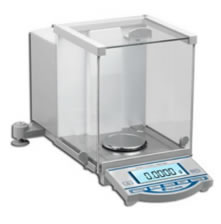76-0474 Dynamic Weight Bearing Test For evaluating spontaneous pain and postural deficits Email Print Panlab
he Dynamic Weight Bearing – New Incapacitance Test, is a new test for assessing spontaneous pain in freely moving rodents, which is based on an instrumented-floor cage and a combined video acquisition system.
$30,350.00
The Dynamic Weight Bearing – New Incapacitance Test, is a new test for assessing spontaneous pain in freely moving rodents, which is based on an instrumented-floor cage and a combined video acquisition system. The Dynamic Weight Bearing test, especially suitable for research on Parkinson and allodynia, was a major break-through in the field of research on analgesia: operator-independent, time-saving, convenient for manipulating large amounts of rodents, and induces no stress on the animal (rat or mouse). The system has been used extensively by many customers from private firms to academic labs since 2008 for various types of research on analgesia and nociception.
The Dynamic Weight Bearing system also offers the possibility of conducting the experiment over a longer observational period (5 minutes) without an operator (thus reducing stress on the animal), and without any habituation period. With these exclusive features, the DWB opens a new and improved generation of instruments for drugs screening and optimization of preclinical models. The latest versio
Operating Principle
Performing the same measurements as the original manual Version, the Advanced DWB (Dynamic Weight Bearing) improves two of the turnkey points of the system: the speed of operation and the operator independent factor. The Advanced DWB allows the user to reduce the most important phase of the process by a factor of 8 to 10, thus the analysis of 1 animal will take 1 to 2 minutes and be operator-independent.
The results encompass a lot of valuable information but will ask for a minimum of manpower and many more animal analysis can be done in the same amount of time than with a manual instrument. The software gives the weight distribution of the animal (rat or mouse), per limb, with additional ratio computations and filtering options.
Analysis and replay can be performed on site or remotely using Bioseb’s exclusive software for Dynamic Weight Bearing and Incapacitance tests. During the analysis and replay, the operator can check and secure each limb recognition for hind and front paws. The weight distribution of the animal (rat or mouse) per limb is then shown in the result window, for each time period with the mean and the variation coefficient.
Parameters Measured:
- Weight for each paw (g and % total animal weight)
- Weight for grouped front and rear paws (g and %total animal weight)
- Left/Right and Front/Rear weight ratio
- Surface for each paw (mm²)
- Surface for grouped front and rear paws (mm²)
- Variability (standart deviation/mean) for each parameter
- Parameters are given for each posture and as a mean for the whole experiment
- Duration of different postures (4 paws, rearing…) over the whole experiment (s)
- Total time spent on each paw over the whole experiment (s)
Key Features:
- Operator-independent
- Time-saving
- Convenient for manipulating large amounts of rodents
- No stress induced on the animal (rat or mouse)
| Technical Specifications | |
| Pc requiremen | Windows Seven os CORE I3 or I5 processor with a minimum of 3 Go of RAM |
| Camera | 640x 480 usb based camera high resolution delivered with its lens, the camera is fixed on the cover – when the settings are correct no need to adjust between animals |
| Versions available | 3 versions: rat, mouse, combined rat+mouse |
| How to Order | ||
| Dynamic Weight Bearing Test | ||
| 76-0474 | BSBIODWBM | Dynamic weight bearing for mouse |
| Product | 76-0474(Dynamic weight bearing for mouse) |
|---|







